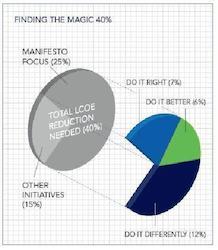AllEarth Renewables and Claire Solar Partners have announced the completion of a 2.2MW solar tracker farm in South Burlington, Vt. According to the companies, it’s the largest solar project in North America to feature distributed inverters and dual-axis trackers to maximize production.
![]() JA Solar provided multi-crystalline 260 watt PID resistant modules for the project. Claire Solar utilized 366 AllSun Trackers and highly efficient modules from JA Solar, to further maximize the farm’s output. The ground-mounted pre-engineered solar trackers, which track the sun throughout the day, produce up to 30 percent more energy than fix ground-mounted systems per JA Solar. The company also says its multi-crystalline 260 watt modules outperform the peers’ modules by 5-10 watts in terms of power rating.
JA Solar provided multi-crystalline 260 watt PID resistant modules for the project. Claire Solar utilized 366 AllSun Trackers and highly efficient modules from JA Solar, to further maximize the farm’s output. The ground-mounted pre-engineered solar trackers, which track the sun throughout the day, produce up to 30 percent more energy than fix ground-mounted systems per JA Solar. The company also says its multi-crystalline 260 watt modules outperform the peers’ modules by 5-10 watts in terms of power rating.
The project was constructed under Vermont’s Sustainably Priced Energy Enterprise Development (SPEED) standard-offer program and will produce over 3 million kilowatt hours of emissions-free energy a year. AllEarth Renewables also served as the EPC for the project. In 2011, AllEarth Renewables utilized their solar trackers for a 2.1MW solar farm across the road from the Claire Solar site.









